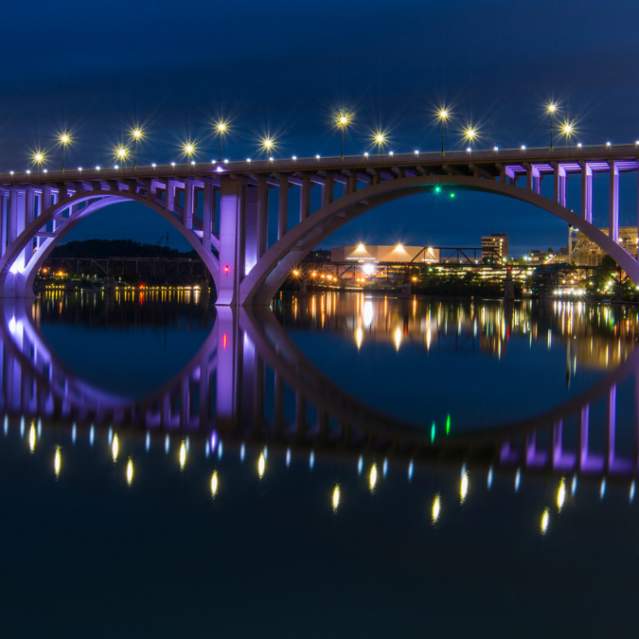1. For most of the period from Knoxville's founding to the year 1844, Knoxvillians hardly celebrated Christmas at all. December 25 was a regular working day. Knoxvillians had probably heard of Christmas, but regarded it as an Old World Catholic holiday.
2. What made the difference was a short novel by Charles Dickens called A Christmas Carol. Popularized in America in 1844, it persuaded all employers to avoid the example of Ebenezer Scrooge. The phrase "Merry Christmas," which appears in Dickens' work, first appeared in an editorial in the Knoxville Register that December.
3. The Christmas shopping season was already becoming a phenomenon soon after the Civil War, and by the 1890s, it was starting long before Thanksgiving. At that time, Knoxville's shopping season was describes as "a wild carnival of selling."
4. The abbreviation "Xmas" was much more common in the 1880s and '90s than it is today, especially in advertising. It was popular and common until it began to decline in the 1960s, with a religious campaign against it.
5. Although Christmas shopping often started early, the "Christmas Season" was mainly considered to crest in late December and early January. Well into the 20th century, most Knoxvillilans did not put up a Christmas tree until Christmas Eve, the day thousands of fresh cedars and firs arrived on Market Square. The Christmas celebration lasted into January, and was a time for sporting events and vaudeville shows. "Christmas Dances" and "Christmas Parties" sometimes took place as late as Jan. 5.
6. In the late 1800s, Christmas Eve was often heralded with pranks and fireworks. One common prank popular among teenage boys was to grease the streetcar tracks. Accidents often resulted, sometimes with injury.
7. In 1893, the celebrations got way out of hand. During what was sometimes termed "the Saturnalia," fireworks set three buildings on fire on Christmas Day, a dynamite bomb damaged the front of the Mechanics Bank, and three policemen were injured trying to quell the riot. The melee resulted in a ban on fireworks in the city.
8. Around 1900, the city's biggest bowling tournament of the year was on Christmas Day, originally in the basement lanes of the Imperial Hotel, on the future site of the Farragut. The all-day tournament attracted hundreds of bowlers and awards were announced at midnight.
9. In 1906, holiday fireworks burned down a notable landmark on Main Street, the Women's Building, famous for its art gallery and ballroom.
10. Knoxville's first big public Christmas tree arrived in 1914, very early in the history of municipal Christmas trees--only two years after the first one ever erected in New York, and several years before the famous National Christmas Tree in Washington. Knoxville's first tree was a 40-footer cut in East Knox County, in an effort organized by the Jovian Society, a fraternity of young men who were fascinated with electricity. It was located on the 500 block of Market Street (then called Prince Street) alongside what's now Krutch Park, where the city Christmas tree is today. It was formally lit with electric lights on Christmas Eve.
11. Knoxville was also early in the establishment of a Christmas Parade, or Santa Claus Parade, in 1928, only four years after the first Macy's holiday parade in New York. These early parades down Gay Street were often extraordinarily elaborate, with large, inflated figures and fanciful community floats, and drew tens of thousands of spectators.

